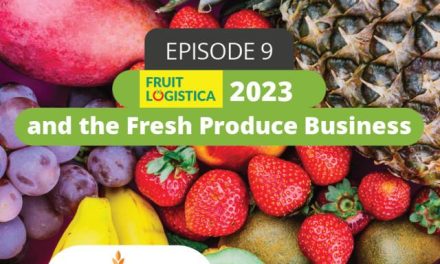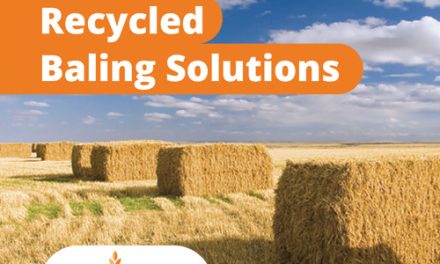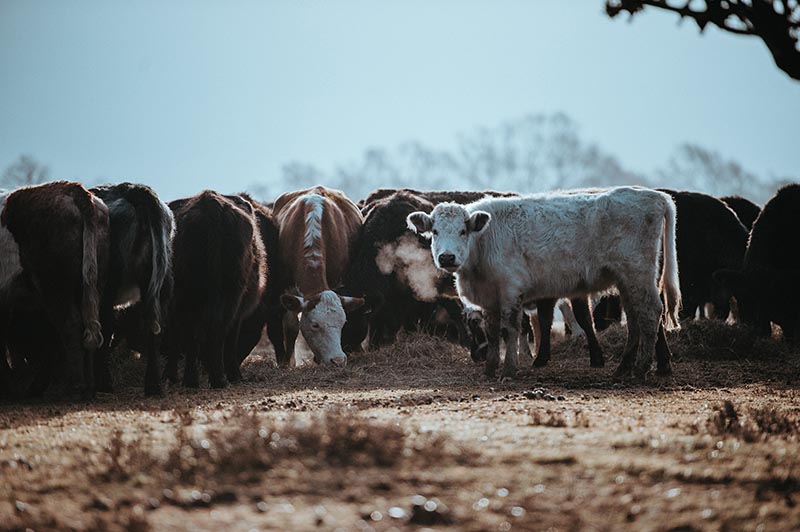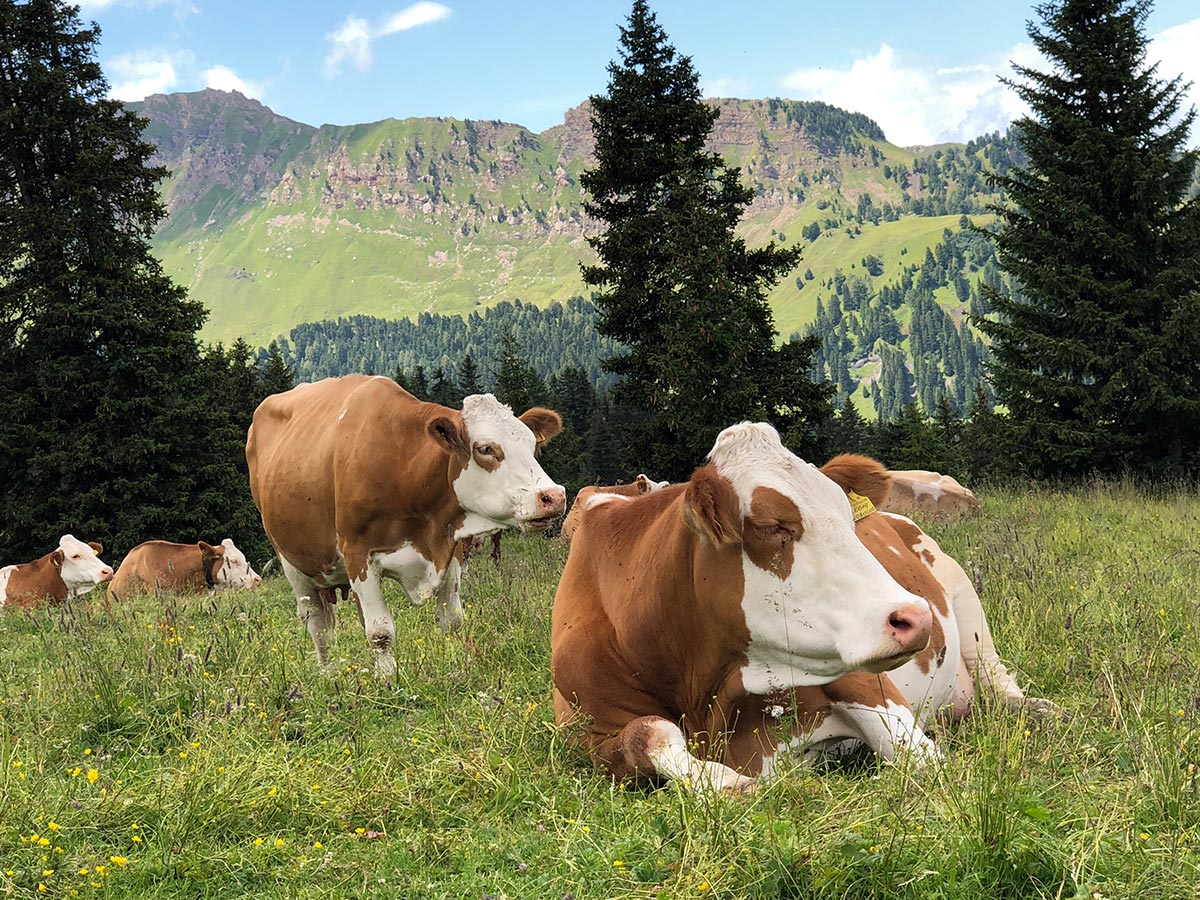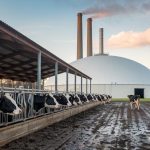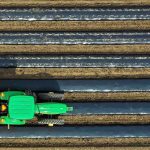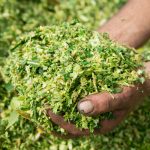
The trend towards sustainable agriculture: grassland management


Global agriculture is currently experiencing a series of challenges that relate, not only to the fact that the supply and distribution chains are disrupted as a result of a global pandemic, but also as a consequence of recent extreme climate events, the scarcity of soils suitable for grazing, the lack of water and mineral resources, as well as the decrease in consumption of meat and dairy products in particular in several regions of the planet, resulting in a significant depreciation in sales and, in the worst-case scenario, the bankruptcy of many farms and agricultural and dairy companies.
Faced with this reality, many farmers are focusing their efforts on finding viable alternatives to manage grasslands better to maintain sustainable agriculture.
Among the initiatives that have emerged, there’s one that’s certainly getting the attention of many farmers, especially in the United States, where it’s already perceived as one of the best options to take advantage of soil properties in a more optimal way through managed grazing.
We are talking about grassland agriculture, but what does it entail? We explain what it all is about below.
While the practice of grassland agriculture is known in several European regions, the truth is that it’s still somewhat unknown in North America.
Grassland agriculture has to do with sustainable grassland management, as it implies the proper use of legumes and pastures to provide quality food for livestock and help sustain wildlife, as well as to make better use of land resources to keep them in better condition and guarantee they last longer.
According to information published in the website of Oregon State University, grasslands occupy nearly half of the total land found in the 48 contiguous states, so they require greater attention to use and manage the land properly.
Benefits of grassland agriculture
There are many benefits of integrating grassland agriculture into a conventional agricultural system since it contributes to improving grassland management:
- protects the soil from factors such as erosion, excess water and nutrient runoff
- produces better quality foods that are less expensive for livestock and wildlife
- contribute to sequester carbon and reduce flooding
- allows maintaining soil fertility longer thanks to its high levels of organic matter (in comparison to other types of crops)
- provides a habitat for wildlife such as pollinator species, fish and birds
This is an exceptional alternative that allows the agricultural industry to address scenarios such as increased production costs and limited processing and marketing options, while it provides a source of income for farmers, managing to maintain investments in rural communities.
What determines the quality of the pastures?
Several aspects directly influence the quality of pastures. Following are some of them:
- the combination of plant species
- the density of grazing animals, as well as their size and health
- land and water availability
- if there is excessive grazing or if, on the contrary, the same is minimal
In the case of excessive grazing, it’s likely for environmental problems to emerge such as surface and groundwater contamination as a result of the nitrogen and phosphorus present in animal urine and faeces, as well as soil compaction, and weed and erosion problems in areas where plant material has been almost destroyed.
One of the alternatives to improve the quality of pastures is by combining grasses and legumes, since legumes offer a high protein content and superior palatability, in addition to adding nitrogen to the soil. Instead, pastures add fibre, grow quickly, and have high yields. Combining multiple species guarantees that at least one of them will grow.
It is important to determine the predominant climate in the region in question to know what type of grass to choose, whether the one for the cold season or warm season.
Some pastures have better qualities to withstand impacts such as the continuous trampling of livestock, while others are more delicate and should be treated more carefully, it will all depend on how grassland management is performed.
If grassland management is carried out properly, the grassland will likely improve without the need for replanting, regardless of its nature or condition.
Ideally, producers should know how to handle and maintain grasslands, and establishing the time when the animals will be grazing is essential to do so by preventing excessive grazing once they have “finished” with the plantation, otherwise, producers would end up with eroded and muddy soils, where the species of desired pastures would be destroyed, allowing the appearance of weeds.
In the case of mountain soils, there could be rainwater runoff filled with nutrients from animal faeces and sediments that would cause downstream contamination.
When there isn’t enough grazing, it is necessary to do permanent monitoring to determine if there are plants that the animals prefer not to eat, rather than more desirable plants, in this way producers could rethink which species to grow.
When there is no grazing at all, the recommendation is to cut the grass periodically to prevent the appearance and spread of undesirable plants. The key is to have healthy grasslands that include a wide variety of grasses, with good herbs and nutritious legumes that can provide a quality diet for the animals. Besides, when appropriate, it’s important to make a subdivision of the pastures and a rotation of the animals, so they get used to eating several types of plants and not just from one species.
Sustainable agricultural initiatives
Agriculture has experienced many ups and downs in several regions of the world, as it’s evident in the state of Wisconsin in the United States, where farmers and owners of dairy farms had to overcome challenging times, which made them come together in a group that will allow them to pursue grassland agriculture.
Grassland 2.0 is a group of collaborators based at the University of Wisconsin-Madison, who are working together to create more opportunities for grazing and other types of perennial grassland agriculture.
Aside from establishing a connection with researchers in the area, the Grassland 2.0 initiative seeks to build partnerships with state and local agencies, meat and milk processors, local citizens and other farmers who want to find and propose transformative solutions to the growing number of challenges the entire Midwest area is facing.
According to information published in the website Hay & Forage Grower, the project is funded by a grant from the USDA National Food and Agriculture Institute and it envisions a future of profitable, productive farmland that also provides many of the benefits of the region’s original prairie such as clean water, healthy soil, biodiversity, and resilience to extreme weather.
The idea is to foster agricultural practices where there are shepherded perennial grasslands that allow healthy food to be produced, where communities have support aiming at being more prosperous and restoring ecosystem processes to promote sustainable agriculture as a result.
China is another nation that has been interested in taking advantage of the grazing and grassland management system. According to the website Nature Research, researchers from Lanzhou University led the development of sustainable grassland agricultural systems, contributing to the evaluation and restoration of degraded grasslands.
The theory contemplates an agroecosystem of grasslands that has transformed China’s long-held ‘grain-oriented’ farmland agriculture into a ‘grain-grass-balanced’ approach to improve national food security.
“The theory categorizes four production levels of grassland agroecosystem: pre-plant production, plant production, animal production, and post-biological production. It considers the relationship between land and forage crops, grassland and livestock, and the forage livestock system and socio-economic activities.”
After practical implementation, they established the grassland agricultural system model for the grain and forage system in the Loess Plateau, along with the mountain-oasis-desert coupled system (MODS) in Gansu Province’s Hexi Corridor, and the forage-livestock coupled ‘Qinglong Model’ in southwest China’s karst areas.
Also, a simulation mapping of the global vegetation was done including 10 ecosystems and more than 40 types of vegetation, covering the world’s surface, except Antarctica. New alternatives have also been proposed to improve livestock feed in extremely high areas of the region where legume fodder is scarce.
Impact of grassland management on the ecosystem
One trend that has gained momentum is the urgent need to see agricultural systems (farms) as part of the general ecosystems of the land, basically because what happens on a farm can be taken as a small sample of the impact it can have on the surrounding environment.
An example may be the type of vegetation cultivated on a specific farm, is it beneficial for local wildlife? Does it require the use of pesticides and chemicals that can affect local birds and fish? All this and more needs to be considered to know what the impact of grassland management will be on the ecosystem of a particular region.
Considering this connection between agricultural production systems and the environment where they are located, it is advisable to talk about agroecosystems.
What’s this all about?
According to the website of Oregon State University, an agroecosystem is an ecosystem that includes one or more farms and the surrounding environment. It contains living or biotic components such as pastures, livestock, insects and diseases, and non-living or abiotic components such as climate, minerals or sunlight. In this sense, living and non-living components interact with each other in many complex ways, so anticipating this interaction is crucial to determine whether it will bring positive or negative results, both for the plantation and for the ecosystem in general. The goal of sustainability is harmony among the players involved.
Silage in grassland management
One aspect that should not be overlooked is the importance of silage in grassland management since the crop harvested to feed the farm animals must be stored appropriately for the entire fermentation process to take place, resulting in the final product or silage.
Fodder has been used for many years to produce silage, as it provides more than 50% of the nutrients needed by beef and dairy cattle, so it’s particularly important to make sure that that high-quality fodder is harvested and to consider certain aspects such as plant growth, harvest type, storage and feeding practices.
Many advantages come from silage as a mechanically harvested product, including that it usually retains a higher amount of nutrients per acre because there are fewer losses during the harvesting process (as long as it’s properly managed), it’s less prone to suffering from external climatic factors because the drying process is not done in an open field, but through silos and plastic wraps, which are arranged in specific and appropriate places, aside from the fact that less supervising staff is required since the process is done mechanically. More crops can be used for silage, being more suitable as an ingredient in mixed rations for livestock.
For more information about silage, its pros and cons, as well as forage storage, we recommend reading our article forage harvesting: what factors cause losses and how to solve the problem.
You can also write to us through the contact page or directly to any of our experts whose contact information you will also find on this page.


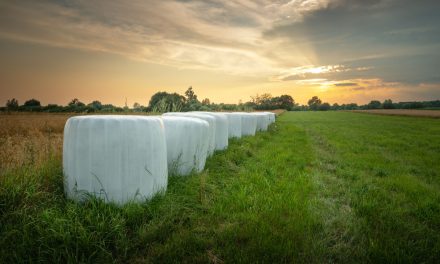
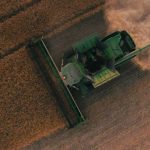

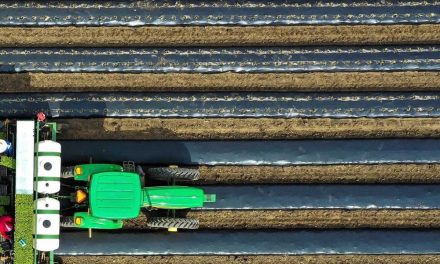



![[eBook Trends in Agriculture Plastics] Increasing use of biodegradable mulch](https://agriplasticscommunity.com/wp-content/uploads/550 × 310_2_ENG-440x264.png)
![[eBook Trends in Agriculture Plastics] Reducing the plastic used in the manufacture of agricultural films](https://agriplasticscommunity.com/wp-content/uploads/550 × 310_1_ENG-440x264.png)






